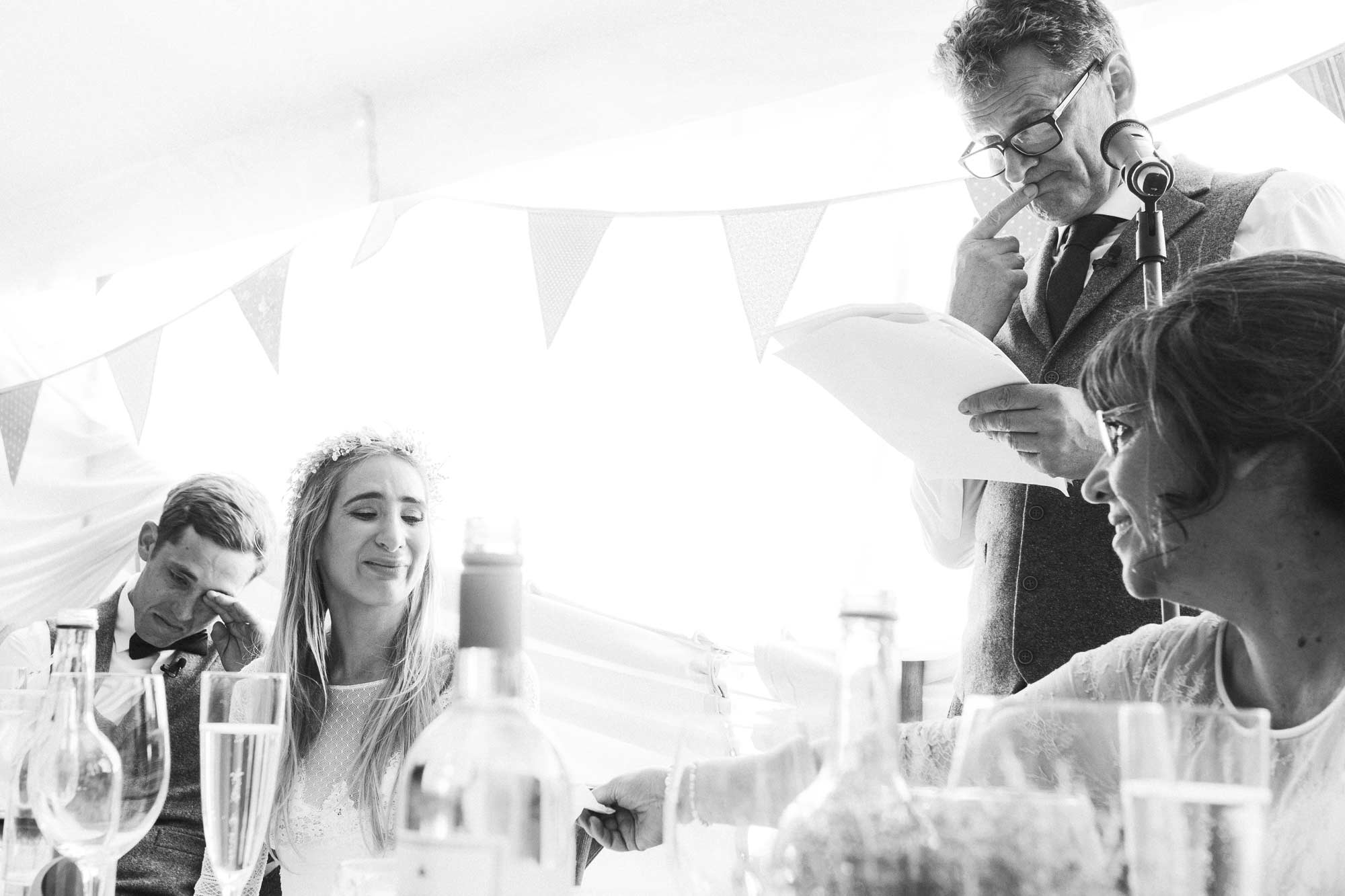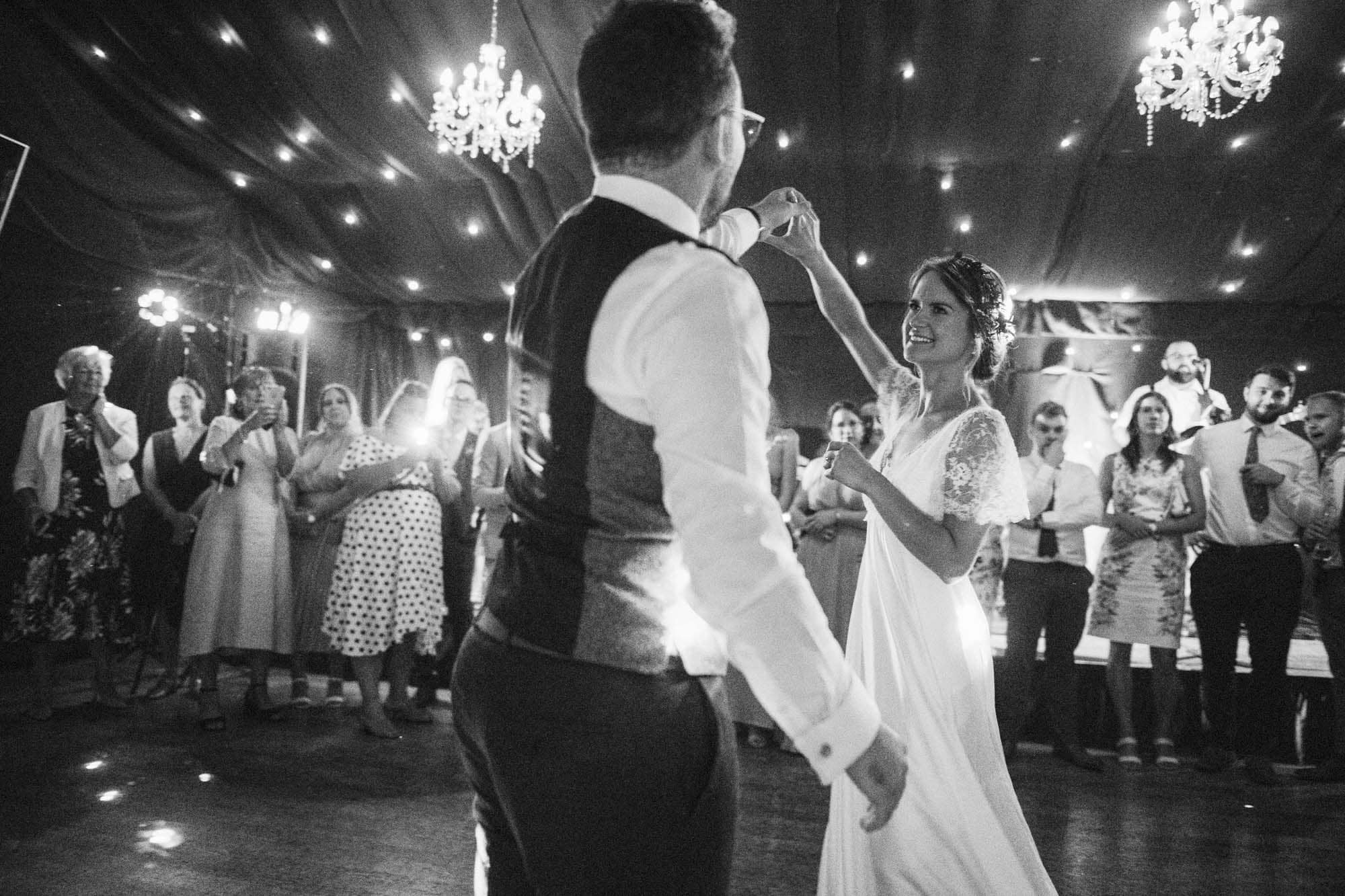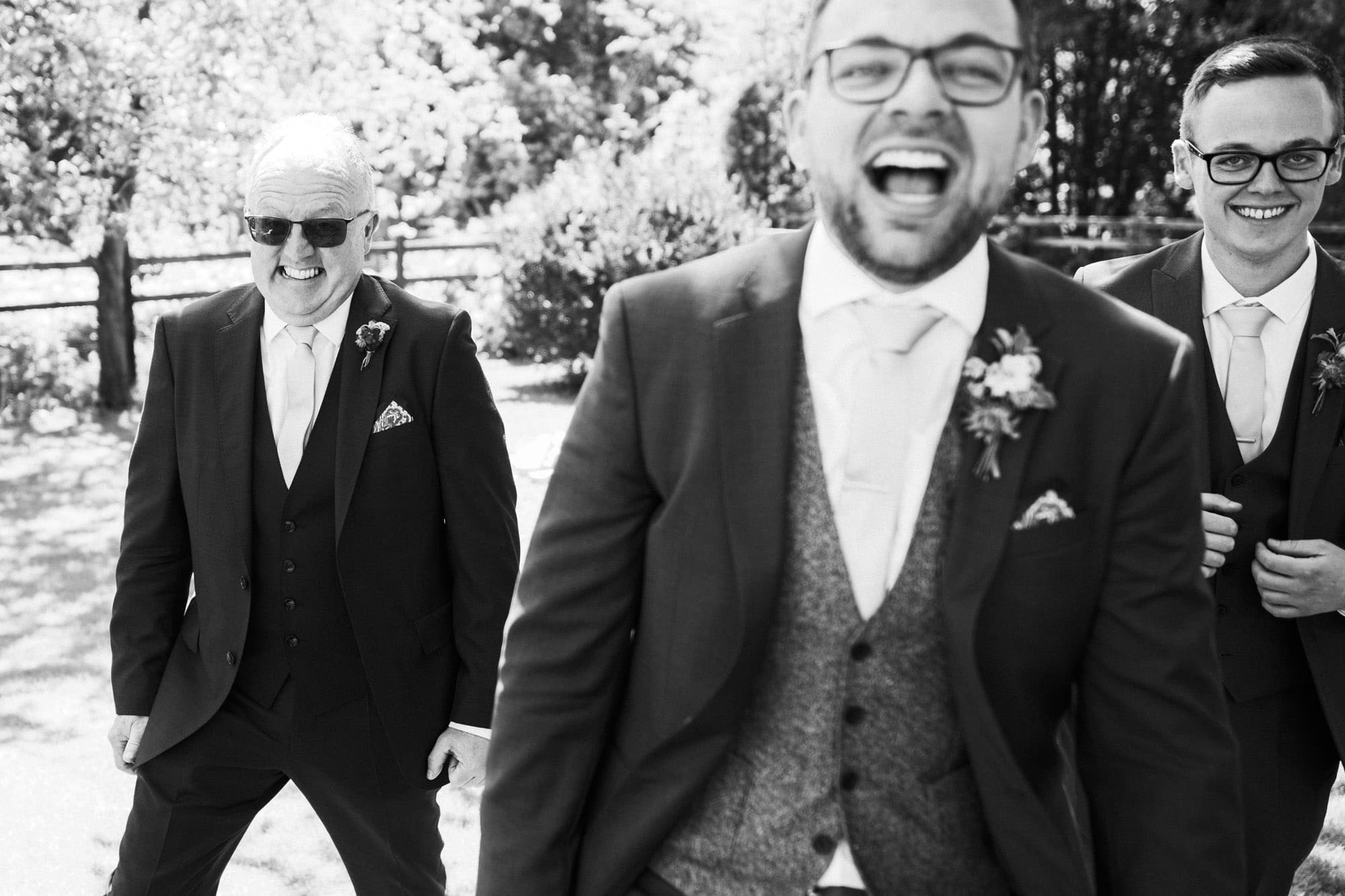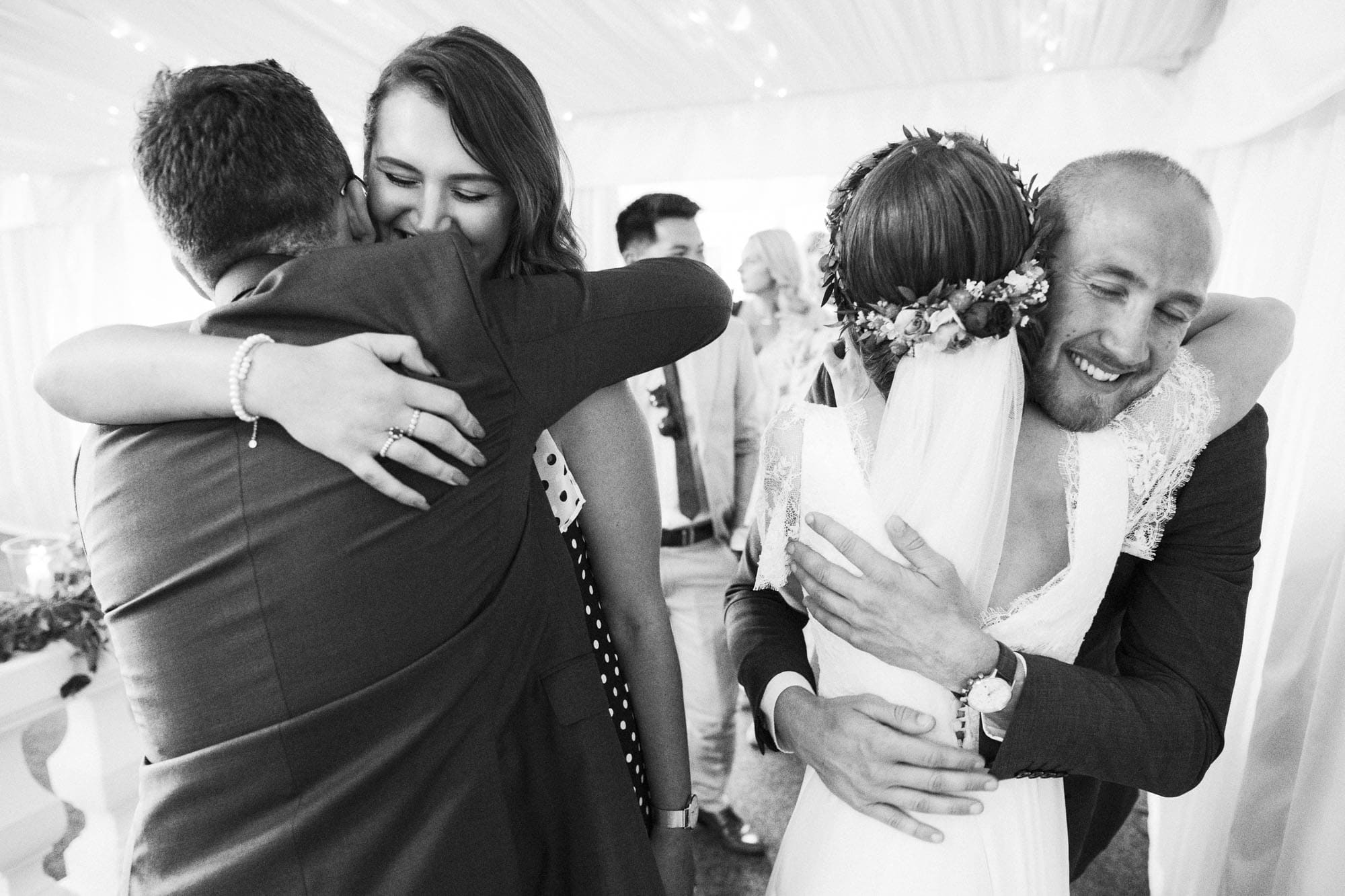Wedding photography has evolved considerably since the days of film into a fair few sub-niches, the need to define a wedding photography style speaks volumes of how far the industry has moved in the last twenty years.
In the beginning, wedding photography was a standardised practice. Everyone knew the drill. A few posed family pictures, cutting of the cake and a first dance, that was pretty much it. I’m pretty sure my parents only have twelve photographs from their wedding day.
Like most evolutions of style, wedding photography sub niches tend to borrow from each other in order to evolve into something new. For example traditional wedding photography still exists but has evolved to include more candid photographs, documentary wedding photography is popular but still includes posed group photographs.
Choosing the right style of wedding photography can be a daunting task, especially if you have no real knowledge of photography.
But that’s not to say you don’t know what you like, it just means that maybe you haven’t seen it yet, or maybe don’t know it exists.
So fear not, this post will explore the different styles of wedding photography, from traditional and classic to contemporary and creative, to help you choose the style that best reflects your personality and preferences.
What are the different styles of wedding photography?
In my eyes, these are the five most distinct styles of wedding photography:
Traditional Wedding Photography
Traditional wedding photography focuses on posed and formal portraits of the couple, their families, and the wedding party. The photographer will direct the group to specific poses and positions to capture traditional moments such as the first kiss, the cutting of the cake, and the first dance. The goal is to create a historical record of events rather than an attempt to tell a story or capture emotion.
Reportage Wedding Photography
Photojournalistic/reportage wedding photography captures candid and spontaneous moments in a natural and unobtrusive manner.
The photographer acts as a fly on the wall, observing and documenting the day’s events as they unfold. The images are typically black and white and focus on the emotional content of the image.
Fine Art Wedding Photography
Fine art wedding photography follows the same philosophy as fine art in general, focusing on aesthetic beauty rather than practical or functional purposes.
The images created in this style are typically heavily orchestrated, posed but unapologetically beautiful.
Fine art wedding photography appreciates beauty and light and takes a tremendous amount of skill and knowledge of light to execute well. The images focus mostly on the couple and details of the day, shot to make everything look as beautiful as possible.
Editorial Wedding Photography
Fashion/editorial wedding photography heavily orchestrates the images and is shot with the intention of telling a brand’s story.
The images are heavily styled, co-ordinating shots of the couple’s accessories, outfits, and jewellery in a specific way. The images are often avant-garde and can feature exaggerated poses, dramatic dress swooshing, and complex lighting setups.
Lifestyle Wedding Photography
Lifestyle wedding photography captures natural and spontaneous moments in a documentary-style approach with a lean into beauty and aspirational style imagery.
The images are intimate but often heavily orchestrated, with the couple given a scenario to play out within a scene that the photographer has created. The scene will take place in an area of the photographer’s choosing, with the intention of creating beautiful imagery with a spontaneous and genuine feel.
It is worth noting that there is room for cross-over between styles, making it difficult to set hard definitions for each. You should look at individual portfolios to get a start on whether their work is for you, but always request a full gallery.
This step is important because taking one or two quality pictures at a wedding isn’t hard, so portfolios are misleading. You need to know that you wont get two good pictures and then hundreds of rubbish ones.
Ask to see a full gallery, don’t be afraid either, ask to see a gallery of a wedding that is in your style of venue or at the time of year you plan to get married. This will give you the complete picture of how your prospective photographer handles potentially difficult lighting situations.
Importance of choosing a wedding photography style
It’s important for you to be aware of the different styles of wedding photography as it will enable you to conduct much more thorough research and find someone who truly fits the style and theme of your wedding. Your wedding photographer will spend all day with you so it’s important that you like them as a person. Knowing what to search for on google will help narrow down your searching and zero in on people who you really want to work with
Factors to Consider When Choosing a Wedding Photography Style
Although there are many different styles of wedding photography, not all are standalone, and photographers may incorporate elements of multiple styles in their work.
As a documentary photographer, I pitch myself as someone who captures real moments of the day.
However, prospective clients will still ask if I take group photographs of their family and friends.
Although you may not see group pictures on my website, I still take them.
This doesn’t make me a traditional wedding photographer, but it means that I am meeting the needs of my clients. Plus there’s always a place for formal group pictures, they have a certain timeless quality to them and are massively underrated in my opinion. It’s hard to think of a photographs value in twenty years time, but as time goes on, the group photographs definitely come into their own.
Beware of styled shoots
When looking for a wedding photographer, be hyper-vigilant, particularly if you lean towards the fashion/fine art/editorial style of images. This is because some photographers use pictures from staged shoots in their portfolios, which is nowhere near the same as a real wedding.
It is essential to see a full, real wedding day gallery to ensure that you know what to expect.
It’s important to consider that staged shoots are not a true representation of a wedding day, and photographers who use these images in their portfolios are engaging in false advertising. This is particularly damaging for the wedding industry, where couples spend a lot of money on their special day, and their wishes and dreams deserve respect.
To miss-sell a product to someone in a heightened emotional state is predatory and perpetuates the idea that wedding suppliers overcharge and are only in it for the money.
Tips for Working with a Wedding Photographer
Wedding photography has evolved, and there are many different styles to choose from. However, it’s important to recognise above all that you are choosing to work with a person, and their personality type may be integral to how they achieve their photographic style. You need to choose a photographer who will listen to your needs and wants.
Make sure you meet your prospective photographer or at least Zoom with them.
Why? I’ll tell you a story.
I’ve seen some incredible wedding photographs over the years, only to be let down when I find out later down the line that the photographer Photoshops the hell out of their images, or they use weird tactics to get laughs, or that they take hours on a wedding day to get one picture.
That shot you fell in love with? You must ask a photographer how they took it. Sure shots on top of mountains look epic, but if they involve a six hour hike, what’s the point?
Be cautious when reviewing portfolios, be sure to ask how the person conducts themselves on the day. Do they interact with guests or are they a silent observer. There is no wrong way to do it, you just need to be aware of what to expect.
What is Photojournalism, documentary, reportage wedding photography?
…all fancy words to explain the same thing.
Capturing a story in a single frame.
Let’s get the basics covered. Photojournalism, candid, reportage wedding photography…You’ve read buzzwords on all of the blogs, glossy magazines and 100 different wedding photographers websites when trying to understand how to choose a photographer.
But what the hell is documentary, reportage or photojournalism when it comes specifically to wedding photography? In recent years, street photography has also added it’s name to the roster of terminology designed to either bamboozle or to appear unique in a crowded market.
It has always been hard to define oneself, particularly when trying to break free from the old school ways of photographing weddings and create a product that was objectively ‘good photography‘, regardless of it being from a wedding.
Clients ten or fifteen years ago were looking for a genuine alternative wedding photographer, but now the alternative is the norm, so the industry must seek to redefine itself once more.
Like in any industry, buzzwords come and go. Rewind about five years and everyone was a fine art photographer.
Jose Villa exploded onto the scene and took over the world. Using medium format cameras and film his soft dreamy colour palette and stunning craft of pictures dominated the industry. Using film means no chance to check your exposure as you go.
Images must be taken slowly, with a greater emphasis on staging a photograph to make it perfect. The grain coupled with shallow depth of field produced stunning images, and a trend was born.
In complete contrast to this, my work is much more heavily weighted to shooting through a moment in a documentary style, so let me explain what I mean by this.

No asking you to pretend to put your makeup on again or to pretend laugh.
If it didn’t happen, then it’s not real.
Giving you something real to look back upon is the entire point. Another word that has slipped into the wedding lexicon is ‘candid’.
Candid’s of guests might be the best way to explain the style. Heads thrown back in laughter, tears rolling down cheeks and trousers being split on the dance floor. If that’s what you call candid, then that’s what I do.
It takes a great deal of trust from the client to be able to be that vulnerable in front of a relative stranger and allow them to capture intimate moments like this.

The term photojournalist derives from news photography, sending journalists out into the world to capture what’s there and not to interfere in any way shape or form. The strict emphasis on pure documentation has been taken to new heights with the invention of Photoshop.
All images that Reuters use for example are straight out of the camera, no adjustments for colour or cropping, the purest form of documentary. I am not quite so strict, a little bit of cropping here and there can be a good thing, whilst a purist at heart, there’s no harm in making a good shot, great.
A distinction needs to be made however as photojournalism can sound a bit like a soulless news style coverage of a wedding.
It is a means of telling the story of your wedding without interfering.
Everything that you see on my site actually happened, you should be able to look back on your wedding photographs and re-live the emotion that occurred at that time. It should ignite something within, it should take you away.
I want you to look at photographs that tell the story of who you are, otherwise you will look back on the images and only remember ‘this is the shot where the photographer told us to do that’, and where’s the meaning in that?
Telling the story of your day
There are a few photographers who go all out documentary, just pure storytelling, no group photographs or couple portraits. However I have to confess that I like the couple photos too.
When I first meet clients, there will always be a discussion around ‘we don’t have any nice pictures together’.
This is an important part of the mixture between delivering what I believe captures the narrative of the day, but also listening to the client and delivering what you want.
Everyone deserves to look fabulous on their wedding day and having a selection of images that you can print and display in your home is an important part of the whole process. The time with just the couple enables you to relax and let it all sink in, its about 20 minutes and well worth it in my view.
What makes me different?
Here is a selection of images which redefine traditional wedding moments. I shoot for narrative, so my couples can look back on their images and relive the moments. I don’t shoot to win awards or to get featured on blogs, my passion is the story.



An important distinction to make between candid photography and just taking pictures and hoping that they make sense, is context. Without context a seemingly great image can fall apart. Piecing the story together, bit by bit to build the whole picture is what a great story. The best feedback is when clients tell me they laughed, cried and re-lived the moments upon seeing the pictures. This tells me that I have achieved everything I set out to do. Producing images of your nearest and dearest being themselves and tying together all of the beautiful emotions of a wedding day into a neat package.
Wedding photography styles frequently asked questions (FAQ)
What are all of the terms associated with wedding photography?
To answer this, I’ve put together a glossary of the most used terms when discussing wedding photography, as well as a brief description for each:
- Traditional or Classic: This style focuses on capturing timeless, posed portraits of the couple, family, and wedding party, as well as key moments during the ceremony and reception. Think first kiss, cutting of the cake, first dance etc. the scripted, more obvious moments.
- Photojournalism: A documentary approach that captures candid, unscripted moments to tell the story of the wedding day as it unfolds.
- Fine Art: This style emphasizes artistic composition, lighting, and editing to create visually stunning images with a dreamy, ethereal quality.
- Editorial: Inspired by fashion magazines, this style captures dramatic, stylized poses and often features creative lighting and post-processing techniques.
- Vintage: This style mimics the look of old photographs by using film or digital filters to create a nostalgic, timeless feel.
- Rustic: Emphasizing natural settings and elements, this style is perfect for outdoor or barn weddings and often features warm, earthy tones.
- Black and White Wedding Photography: This classic style focuses on the use of monochromatic images to create a timeless, elegant look.
- Cinematic: This style aims to capture the wedding day like a movie, with an emphasis on storytelling and mood. Pictures may even be cropped widescreen to emphasise the cinematic aesthetic.
- Lifestyle: A more casual approach that captures candid moments and genuine emotions, while still incorporating some posed shots.
- Moody and Dark: This style utilizes deep shadows, rich colours, and dramatic lighting to create a romantic and mysterious atmosphere.
- Aerial: Using drones or other aerial equipment, this style captures bird’s-eye view shots of the wedding venue and surrounding landscape.
- Candid Wedding Photography: This style focuses on capturing genuine emotions and spontaneous moments, often taken without the subjects being aware of the camera.
- Minimalist: This style emphasizes simplicity, using clean compositions and negative space to draw attention to the subjects.
- Destination: Tailored to destination weddings, this style captures the unique beauty and culture of the wedding location.
- Adventure: Perfect for couples who love the outdoors, this style incorporates breath-taking landscapes and adventurous settings. More suited to the days after the wedding, capturing these pictures requires a considerable amount of time. Too much to achieve on a wedding day.
- Intimate and Elopement: Focused on small, intimate weddings or elopements, this style emphasises the closeness and emotion of these smaller celebrations.
- LGBTQ+: This style embraces the diversity of LGBTQ+ couples, capturing their love stories with authenticity and sensitivity. Some businesses have LGBTQ+ friendly tags on their Google Business profiles.
- Film: This style uses analogue cameras and traditional film stocks to capture the wedding, creating a distinct, organic look with a nostalgic touch. Film photographers often emphasize the unique qualities of film, such as its grain and colour rendering, to create images with a timeless feel.
- Hybrid (Film and Digital): This approach combines the best of both worlds, with the photographer using both film and digital cameras during the wedding. This allows them to capture the artistic, nostalgic quality of film while also benefiting from the convenience and flexibility of digital photography. The final collection of images showcases the unique characteristics of both mediums, offering the couple a diverse and visually rich album.
- First Look Photography: This style captures the emotional moment when the couple sees each other for the first time on their wedding day, usually before the ceremony. The photographer carefully orchestrates the scene and documents the couple’s reactions, creating a series of intimate and candid images that showcase their love and excitement.
- Engagement Photography: Also known as pre-wedding or couple’s photography, this style focuses on capturing the couple’s relationship before the wedding day. The session often takes place in a meaningful location and can include a variety of posed and candid shots. These images are often used for save-the-date cards, wedding websites, or simply as a keepsake for the couple.
- Reportage Photography: Similar to photojournalism, this documentary-style approach captures the wedding day as it unfolds, emphasizing candid moments and genuine emotions. The photographer blends into the background, unobtrusively documenting the event and creating a visual narrative that tells the story of the wedding.
- Photo Booths: An increasingly popular addition to weddings, photo booths provide a fun, interactive experience for guests. They can be set up with a variety of backdrops, props, and themes, allowing guests to take playful, candid photos of themselves throughout the event. Some photographers offer photo booth services in addition to their standard wedding photography packages.
- Animated GIFs: This modern style creates a series of images that are combined to form a short, looping animation. The photographer captures a sequence of photos in rapid succession, which can then be turned into a digital GIF. This style is perfect for capturing fun, lively moments during the wedding and adds a unique, interactive element to the couple’s photo collection, more often than not for use on social media.
- Street Photography: Borrowing techniques from street photography, this style captures candid, unposed moments at the wedding, focusing on the interactions between guests and the atmosphere of the event. The photographer looks for interesting compositions, emotions, and scenes that reflect the energy and spirit of the celebration.
- Bridal Boudoir Photography: This intimate style captures sensual, romantic images of the bride-to-be in a private setting, often wearing lingerie or other delicate garments. The session usually takes place before the wedding day and can be a gift for the groom or a celebration of the bride’s confidence and beauty.
Conclusion
In conclusion, choosing the right wedding photography style is an essential aspect of preserving your day in the way you want to remember it. From traditional and posed to candid and documentary, each style brings its unique charm and character, but it has to be the right fit for you. I encourage you not to chase trends and go for something that feels true to you and your style, because that’s what will age well. Take the time to research and communicate with your photographer to ensure you’re on the same page, when you then get to experience the wedding day with a photographer you love and receive photographs that are true to you, you’ll be well glad you did. Head to my resources page for further reading!
